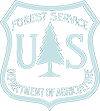Firefighter & Public Safety
Click on a Value below to see what Actions you can take.Fire in the South: We Value People's Lives by Increasing Firefighter and Public Safety Across the South
Increasing Firefighter and Public Safety is one of the values identified in the Cohesive Strategy in the Southeast. We need to work together to reduce the risk of possible death and injury to firefighters and the public by engaging those working in this environment and others who have not previously considered themselves stakeholders in wildland fire management.
The following actions contain additional tasks that may be appropriate for you to be a part. Each describes the activity along with links and resources that will be useful in moving forward.
There are 12 Actions Leading to This Value. Click on an action below to see how you can get involved and make a difference.
-
Utilize prioritization in Southern Wildfire Risk Assessment (SWRA) and other efforts to identify and treat wildland fuels to create tactical fuel breaks in areas that facilitate tactical defense of human communities or ecological values and services from wildfire.
Work cooperatively across agency lines to accomplish prioritized fuels treatments.
Utilize SouthWRAP to target fuels treatments.
Provide education and outreach to forest products industry as to encourage treatment of wildland fuels.
- Southern Group of State Foresters (SGSF)
- U.S. Department of the Interior (DOI)
- U.S. Forest Service (USFS)
Use of alternative management techniques to treat wildland fuels where prescribed fire is not feasible or appropriate.
Identify areas where fuels treatments provide significant ecological benefits.
- Southern Group of State Foresters (SGSF)
- U.S. Department of Defense (DoD)
- U.S. Department of the Interior (DOI)
- U.S. Forest Service (USFS)
-
Look for opportunities to increase staffing and training of wildland firefighting (joint academies, MOUs etc)
Coordinate wildland fire training activities.
Work with partners to determine appropriate level of wildland fire training.
Utilize Recognition of Prior Learning (RPL) wildland qualifications and the existing NWCG Crosswalk training where appropriate.
Ensure trained Fire Department members and cooperators gain experience on wildland fires.
Assist structural firefighting organizations with obtaining wildland Personal Protective Equipment
Reach out to All Hazard Incident Management Team
Increase opportunities for responders wanting wildfire experience.
-
Jointly develop specialized fire suppression equipment.
Work with partners on radio inter-operability issues.
- Southern Group of State Foresters (SGSF)
- U.S. Department of the Interior (DOI)
- U.S. Forest Service (USFS)
Increase participation in the DoD Fire Fighter Property program for fire departments.
Create collaboratives to jointly explore needs and potential solutions.
Investigate equipment used by structural fire services and the military for use or modification in wildland fire.
Work with universities for research grants for wildland technology and equipment.
- Southern Group of State Foresters (SGSF)
- U.S. Department of the Interior (DOI)
- U.S. Forest Service (USFS)
Increase participation in the DoD Fire Fighter Property program for fire departments.
-
Utilize partnerships/agreements to increase interagency cooperation during wildland fire suppression.
Resolve co-op fire billing issue between states and the Federal Agencies
Review opportunity/updating of statewide mutual aid agreements / memorandums to increase movement of resources.
Jason Stienwietz - USFSReview, update and streamline, or develop as needed all cross-jurisdictional MOUs.
- Southern Group of State Foresters (SGSF)
- U.S. Department of Defense (DoD)
- U.S. Department of the Interior (DOI)
- U.S. Forest Service (USFS)
Determine and develop the minimal number of Type 3 IMTs needed per state.
-
Increase awareness of community and homeowner responsibility for fire preparedness and prevention.
Educate public on WUI and wildland fire challenges.
Encourage property owners to activiely manage against wildfire risk.
-
Use technology to inform decisionmakers on wildland fire in a timely manner.
Utilize and promote SouthWRAP (include web address/link)
For more information, visit http://www.southernwildfirerisk.com
-
Work with landowners to manage lands to be resilient to wildfire while supporting traditional forest products markets.
Make policy changes to federal programs to further expand fuels reduction work.
Integrate programs between urban forestry and forest management to target small woodlot management and fuels reduction.
- Southern Group of State Foresters (SGSF)
- U.S. Forest Service (USFS)
Ease access to restoration funding after wildfires on both public and private lands.
Understand impact of taxes to landowners ability to manage lands.
Identify cultural values in local CWPPs.
Utilize SRS info on family forest opportunities to manage for wildfire risk reduction.
Host "Community Days" at Department of Defense (DoD) installations.
Identify cultural values in local CWPPs and related intergovernmental planning documents
- National Association of Counties (NACO)
- Southern Group of State Foresters (SGSF)
- U.S. Department of the Interior (DOI)
- U.S. Forest Service (USFS)
Encourage interactive educational programs that highlight the multicultural heritage of fire in the Southeast.
- U.S. Forest Service (USFS)
Integrate programs between urban forestry and forest management to address wildfire.
Encourage interactive educational programs at both the government and non-governmental levels that highlight the multicultural heritage of fire in the Southeast.
-
Coordinate between landowners and managers to address wildland fire.
Work with the insurance industry on products that motivate homeowners to improve properties
Encourage homeowners to create both managed natural and landscaped plantings with trees and shrubs to reduce wildfire risk.
Create a model fire adapted community concept that results in higer ISO ratings.
- Fire Adapted Communities (FAC)
- Fire Learning Network (FLN)
- The Nature Conservancy (TNC)
Evaluate the establishment of a National Fire Insurance Program similar to the Flood Program
Target and regionalize tools created by the fire adapted communities coalition.
Work with planners/developers to establish best practices at all levels.
Recommend codes and standards for developing and maintaining Fire Adapted Communities
Establish an incentive program for the creation of fire adapted communities through CWPP’s and other comprehensive community planning practices.
-
Keep prescribed fire as a valid management tool through working with regulatory agencies.
Work with regulatory agencies to reduce constraints on prescribed burning.
- Southern Group of State Foresters (SGSF)
- U.S. Department of the Interior (DOI)
- U.S. Forest Service (USFS)
Work with legislative officials to reduce constraints on prescribed burning.
- Prescribed Fire Council (PFC)
- Southern Group of State Foresters (SGSF)
Utilize and promote best burning practices
- Forest Landowners Association (FLA)
- Prescribed Fire Council (PFC)
- Southeastern Association of Fish and Wildlife Agencies (SEAFWA)
- Southern Group of State Foresters (SGSF)
- The Association of Consulting Foresters (ACF)
- U.S. Department of Defense (DoD)
- U.S. Department of the Interior (DOI)
- U.S. Forest Service (USFS)
Continue to support the work of the SERPPAS air quality and prescribed fire working teams.
Work among appropriate agencies to expedite public alerts on smoke related issues.
- Southern Group of State Foresters (SGSF)
- U.S. Department of the Interior (DOI)
- U.S. Forest Service (USFS)
- air-quality-regulators
- wildland-and-structural-fire-departments
-
Encourage greater public smoke awareness through outreach and understanding.
Expand/create public awareness and education campaigns
Expand outreach in localized areas before prescribed fires.
- Southern Group of State Foresters (SGSF)
- U.S. Department of the Interior (DOI)
- U.S. Forest Service (USFS)
Collect success stories that highlight the benefits of prescribed burning operations compared to wildfires
- Fire Learning Network (FLN)
- Prescribed Fire Council (PFC)
- Regional Strategy Committee (RSC)
- The Nature Conservancy (TNC)
-
Control invasive species that alter fire regimes and ecosystem function.
Look to state forest and wildlife action plans to target high wildfire risk geographies.
Engage landowners in the identification and control/eradication of highly flammable invasive species.
Utilize FS Forest Health Program funds on areas of high wildfire risk.
- U.S. Forest Service (USFS)
Provide education programs/materials for homeowners and landowners that target the most destructive invasives.
-
Coordinate with all levels of government on community preparedness and mobilization activities (incl. evacuation).
Coordinate outreach on predicted fire potential.
Increase creation and implementation of community preparedness plans.
Utilize well established programs in the development of CWPPs where none exist.
- Southern Group of State Foresters (SGSF)
- U.S. Department of the Interior (DOI)
- U.S. Forest Service (USFS)
Incorporate CWPPs into the SWRA.
Identify transportation routes capable of handling large equipment and two-way traffic
Create geographically specific messages for community meetings.










